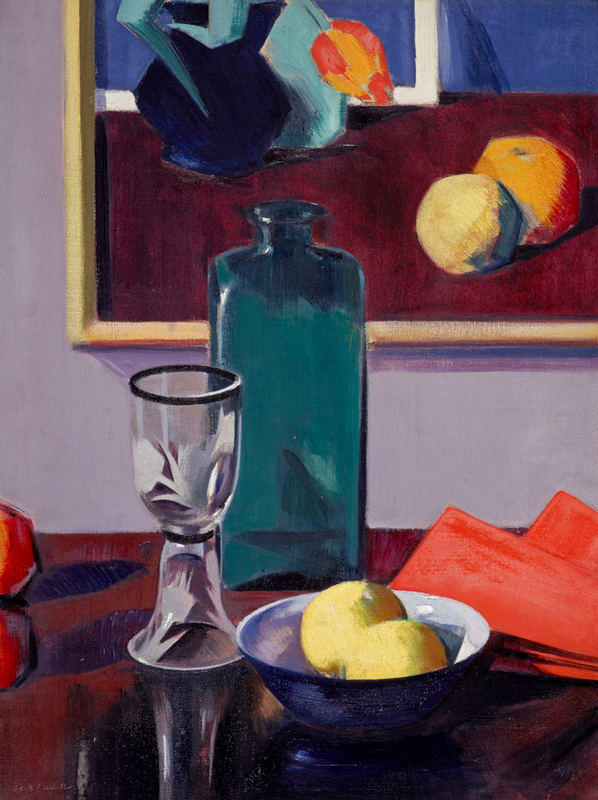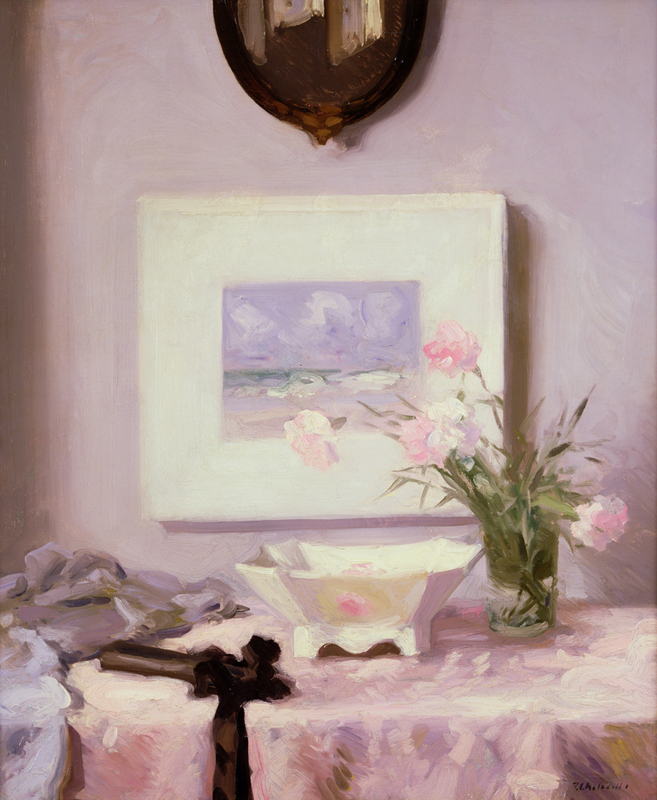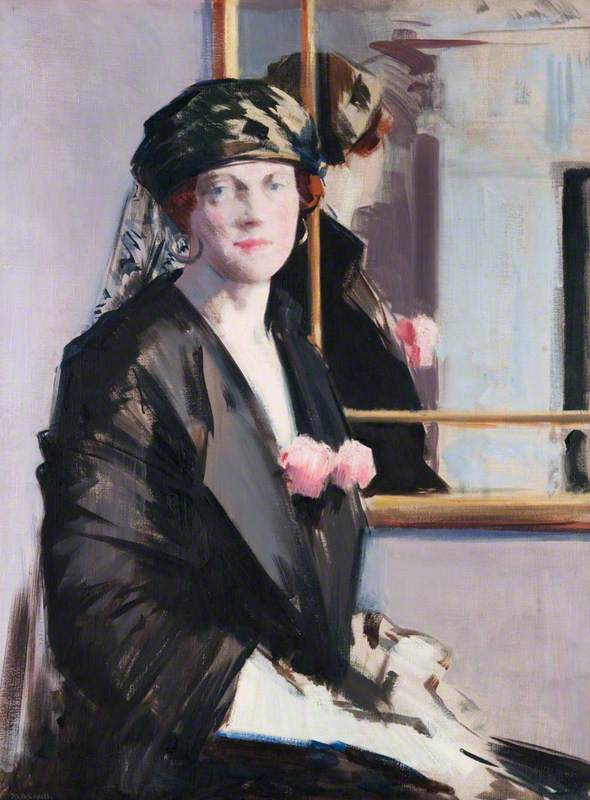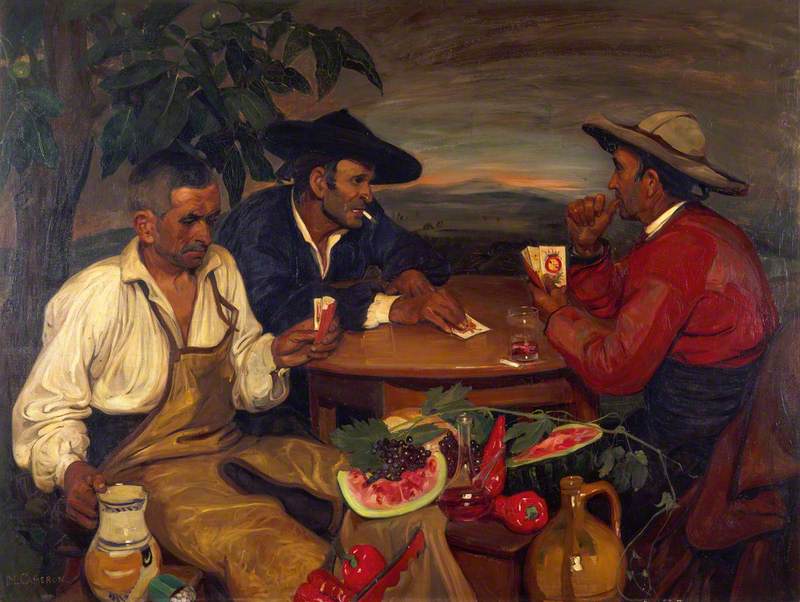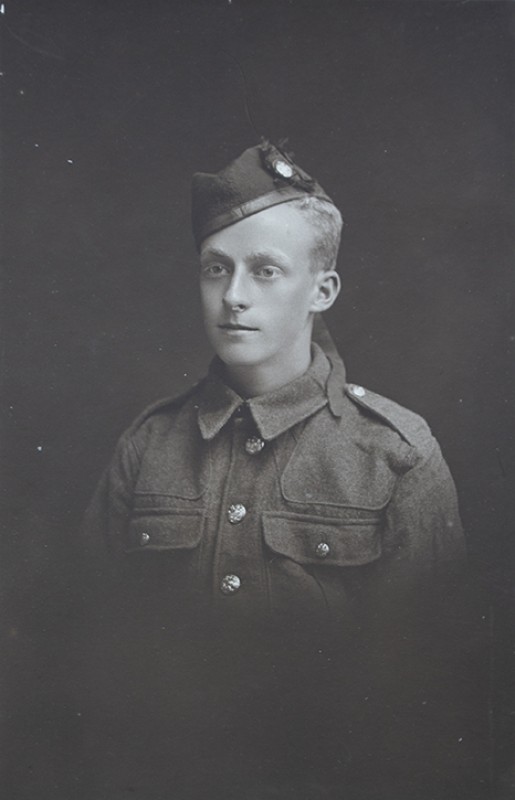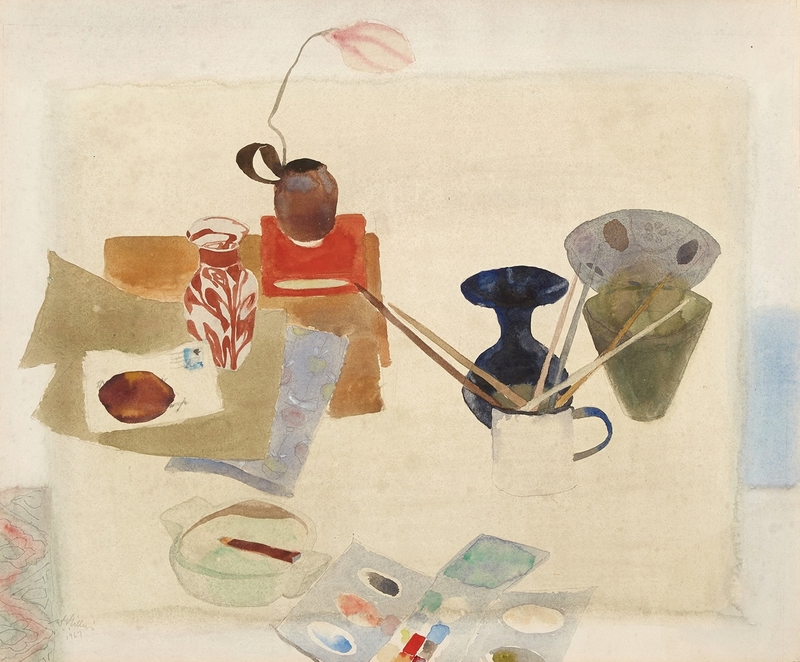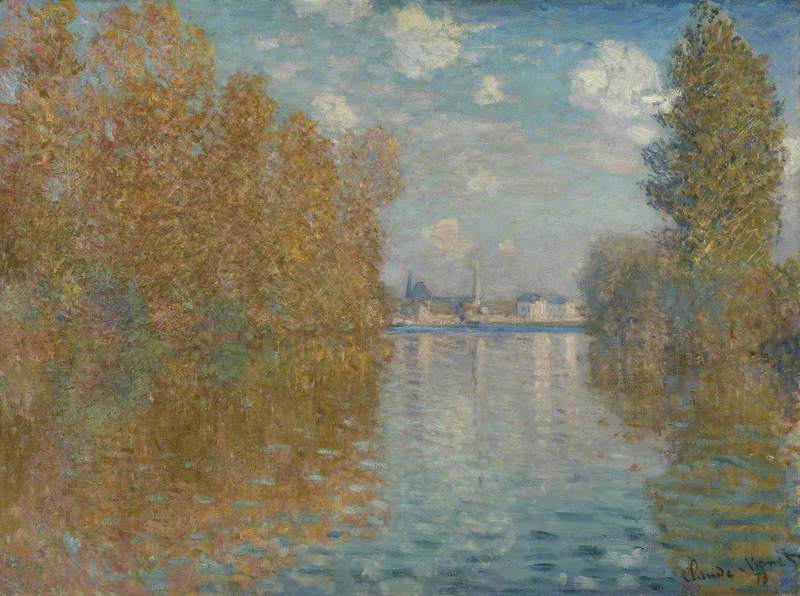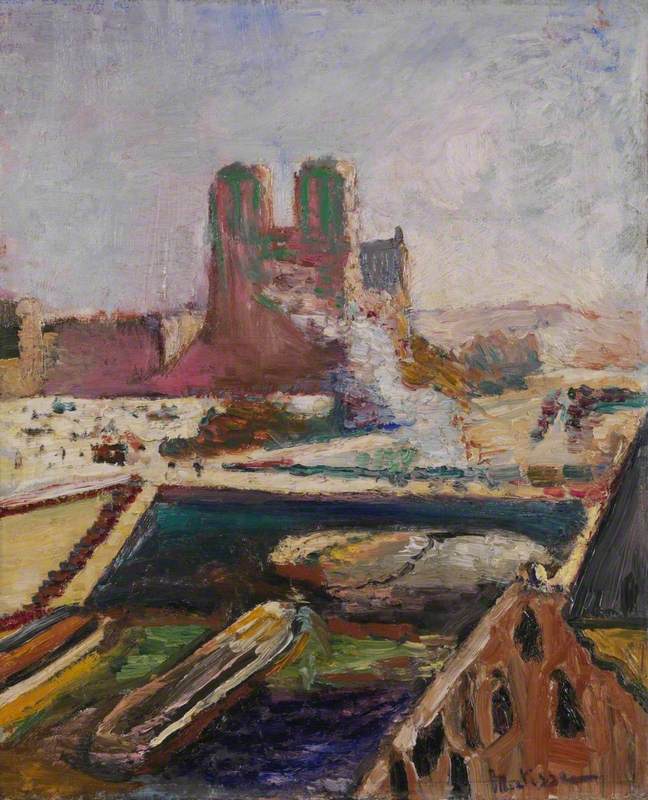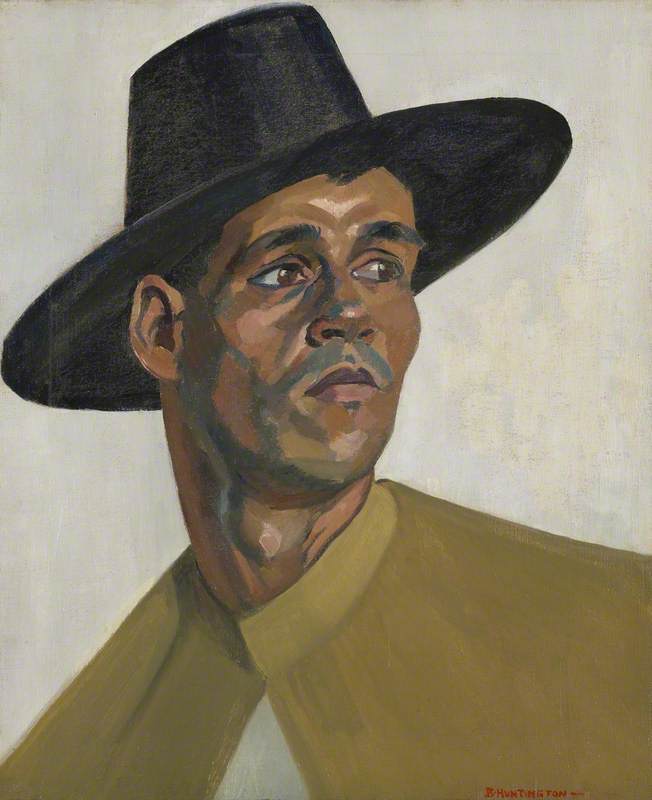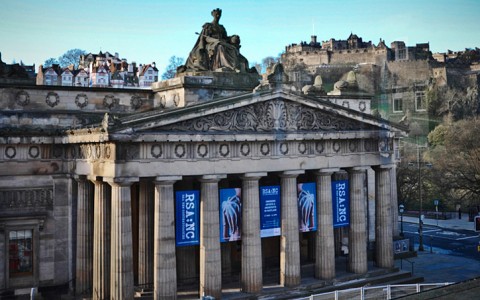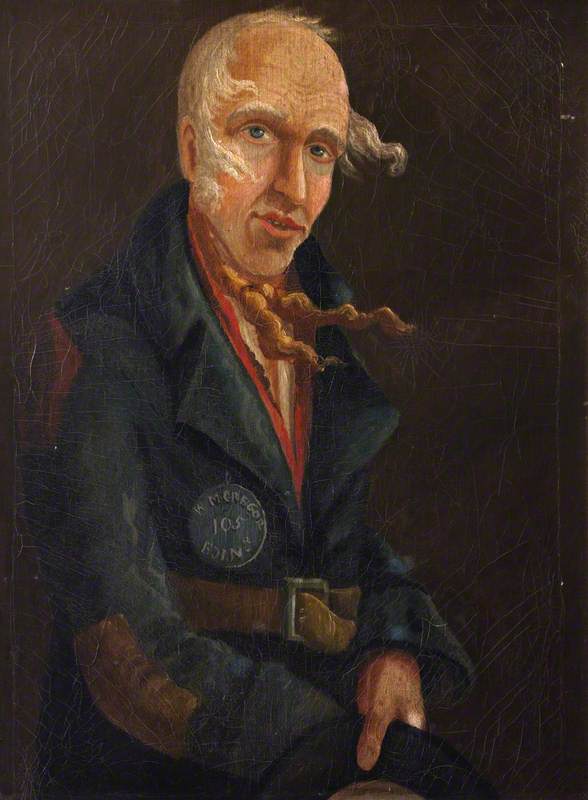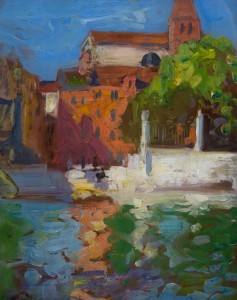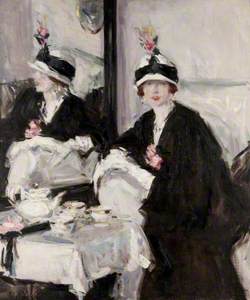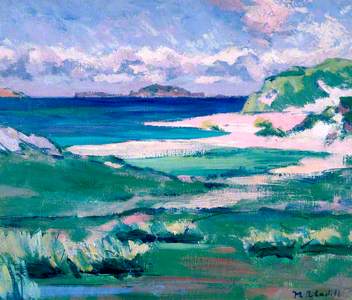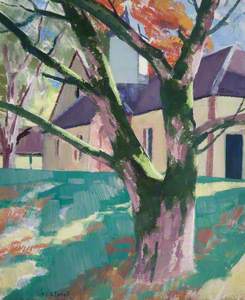Francis Campbell Boileau Cadell (1883–1937) can be considered the most Scottish of the four artists commonly known as the 'Scottish Colourists', the others being John Duncan Fergusson (1874–1961), George Leslie Hunter (1877–1931) and Samuel John Peploe (1871–1935). Together, they are the most celebrated artists in modern Scottish art history.
Cadell was born in Edinburgh and lived there for most of his life, mainly in its Georgian New Town. He was inspired by the light, architecture and society of the Scottish capital and the natural beauty of the Hebridean island of Iona, where he spent many summers. Cadell's reputation is based on the work he made immediately before the First World War – in which he served – and of the 1920s, when he and his paintings epitomised a sophisticated lifestyle in which Scotland and the continent merged with the traditional and modern.
Although elected to the Royal Scottish Academy and the Royal Scottish Society of Painters in Watercolours, Cadell listed his recreation in Who's Who as 'Bed and Billiards', continuously lived beyond his means and died with an uncashed cheque for £50 from the Alexander Nasmyth Fund for Decayed Scottish Artists amongst his possessions.
At the suggestion of Arthur Melville (1855–1904), a close associate of the Glasgow Boys, Cadell moved to Paris with his mother and sister when he was 16 years old. He enrolled at the Académie Julian and later at the Akademie der Bildenden Künste in Munich, providing a broad, European training. A painting trip to Venice in 1910, funded by the solicitor and politician Sir Patrick Ford (1880–1945), prompted a breakthrough in Cadell's work. His technique became freer, his palette brighter and a long-standing interest in reflections was born. Generously loaded brushes were applied to modestly-sized panels with fluency and vigour, depicting scenes painted on the spot.
Cadell established his pre-war practice from a sizeable studio at 130 George Street in Edinburgh. Walls painted in shades of white, grey and lilac, floorboards painted black and polished and minimal furnishings created an elegant ambience captured in paintings such as Reflections. A fashionable young lady is depicted seated on a sofa, seen simultaneously in the mirror beside her, in which a further mirror can be glimpsed. A table set for tea is nearby, on which a discarded fan is visible. Feathery brushstrokes orchestrate a palette based on black and light greys, with highlights of pink and shimmering gold.
The prominence of black in Cadell's work can probably be traced to that of Édouard Manet (1832–1883), whilst the nuanced use of lighter shades has been linked to the late work of William McTaggart (1835–1910), himself described as a Scottish Impressionist and grandfather of the Scottish Colourists.
Indeed, whilst the other Colourists found inspiration in more modern French art, including that of Henri Matisse (1869–1954) and the Fauves, Cadell admired artists including John Lavery (1856–1941), John Singer Sargent (1856–1925) and James Abbott McNeill Whistler (1834–1903).
Moreover, Peploe and Fergusson were members of the avant-garde Rhythm group in pre-war Paris, alongside Anne Estelle Rice (1877–1959), Jessica Dismorr (1885–1939) and others. In contrast, Cadell was a co-founder of the Edinburgh-based Society of Eight, alongside artists more steeped in art history, including Lavery, Patrick William Adam (1854–1929) and David Alison (1882–1955).
Cadell also became proficient in the genre of the still life whilst based in George Street, as can be seen in Carnations of about 1914. Based on a similar technique to Reflections but with a warmer palette, and featuring a familiar fan and mirror, the light is suffused and the atmosphere peaceful. It is an early example of a favoured conceit of Cadell's, the inclusion of a work within a work. In this instance, an Iona landscape is hanging on the wall, following the artist's first earliest visits to the island.
Cadell served with the 'Dandy Ninth' Battalion of The Royal Scots during the First World War, so-called as it was the only kilted battalion of the lowland regiment. Following his demobilisation in 1919, Cadell moved to 6 Ainslie Place in Edinburgh's New Town. His work underwent an abrupt and dramatic change, partly encouraged by close collaboration with Peploe, but also stimulated by his splendid and stylishly decorated new accommodation – which spread over four floors – and a growing interest in the movement which was to be christened 'Art Deco'.
The Embroidered Cloak of c.1923 encompasses the development, glamour and modernity of his work of the early 1920s. The overall impression is one of discipline and simplification. Paint application is controlled, form and volume are suppressed, pattern and plane are contrasted, colour and hue are balanced, the light is even and strong. The painting is neither interior, nor portrait, but rather the essence of fashionable living.
Still Life and Rosechatel
1924
Francis Campbell Boileau Cadell (1883–1937) 
This new approach is equally apparent in Cadell's still lifes of the period, such as Still Life and Rosechatel of 1924. The sensuality of polished table top, translucent glass of wine and reflective wine bottle is tempered by the cropped composition, flat planes of dark and lighter blue – which barely have a descriptive role – and the rigorous rendering of the props, from red chair to green porcelain. Cadell's use of increasingly acidic colours, geometric structure, decorative forms and narrow depth of field put him at the forefront of the modern movement, with works which are remarkable within British art of the period.
Ben More in the Isle of Mull, Inner Hebrides
c.1932
Francis Campbell Boileau Cadell (1883–1937) 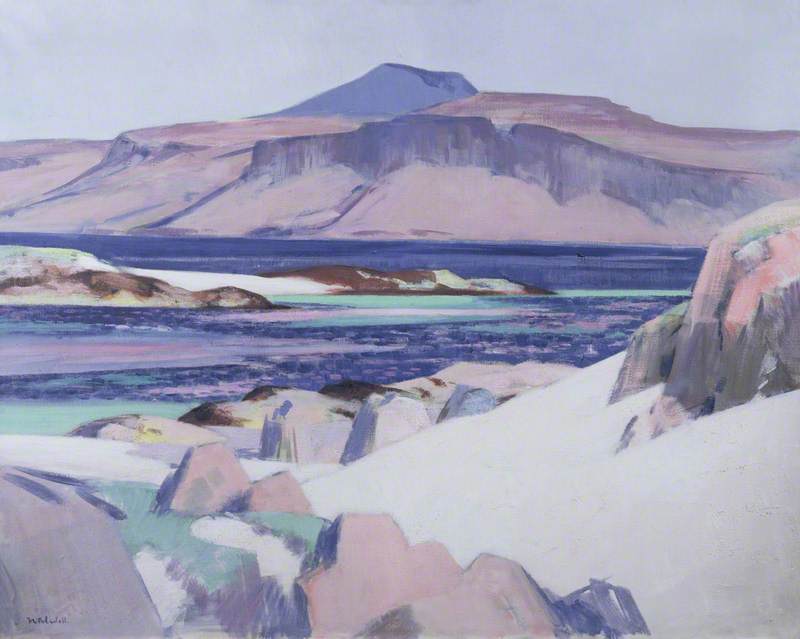
Running alongside Cadell's studio practice are his depictions of Iona. His Society of Eight co-founders John Duncan (1866–1945) and James Paterson (1854–1932) had painted there before Cadell's first visit in 1912. This trip led to virtually annual summer visits until at least 1933, from 1920 often accompanied by Peploe.
Ben More in the Isle of Mull, Inner Hebrides shows a view from Iona favoured by both Colourists. They and other members of the artistic community centred on the island, such as William Caldwell Crawford (1879–1960) and William Mervyn Glass (1885–1965) rejoiced in the Hebridean light, which intensifies the colours of the sea, beaches and pastures of the island. Cadell's Iona paintings were highly commercial, which became increasingly important as the Scottish art market declined towards the end of the 1920s and Cadell's lavish lifestyle began to tell on his health as well his finances.
Interior, Regent Terrace, Edinburgh
1932–1933
Francis Campbell Boileau Cadell (1883–1937) 
Unable to afford the upkeep of Ainslie Place, in 1932 Cadell moved to the more modest 30 Regent Terrace in Edinburgh, as seen in Interior, Regent Terrace, Edinburgh of about that year. This reveals his late style: continuing the interior genre, based on a structure of black now increasingly used to outline features, a freer technique and more sober colours.
As Cadell's personal situation deteriorated, so his professional stature grew, with acquisitions for public collections including Black and Gold of the early 1920s for the McLean Museum and Modern Art and Pink and Gold of a similar date by Paisley Art Institute. In 1936, Cadell was elected a member of the Royal Scottish Academy, but died the following year.
Although claimed as a 'Scottish Colourist', Cadell was only friends with Peploe and the four artists exhibited together just three times during their lifetimes, in Paris in 1924 and 1931 and in London in 1925. The group's moniker was not coined until 1948, when all but Fergusson had died. Cadell's individual achievement lies in the development of the interior genre, continuing a Scottish tradition established by artists such as David Wilkie (1785–1841) and William Quiller Orchardson (1832–1910).
He was a pioneer of the Art Deco style in Scotland, not least through his still lifes of the early to mid-1920s, before the celebrated 'Exposition international des arts décoratifs et industriels modernes' was staged in Paris in 1925 and popularised the movement. Cadell's images of Iona, made over 20 years, represent a definable strand within Scottish landscape painting, which have exerted a powerful influence on those who have followed in his footsteps to the island.
Cadell's legacy can be seen particularly in the work of the next generation, including Anne Redpath (1895–1965) and Dorothy Johnstone (1892–1980), not least due to his strengthening and development of Scotland's belle peinture tradition. Unsurprisingly for an artist who lived and worked in his home country for most of his life and drew his inspiration from its architecture, society and natural beauty, Cadell is little known beyond Scotland.
Alice Strang, art historian, curator and author of the book F. C. B. Cadell





